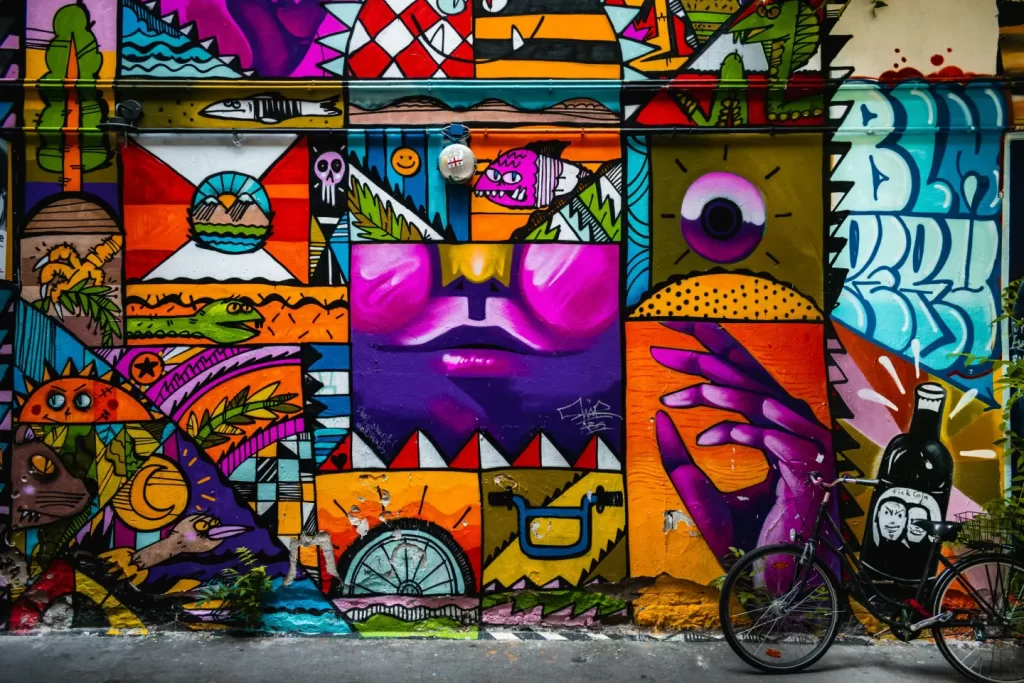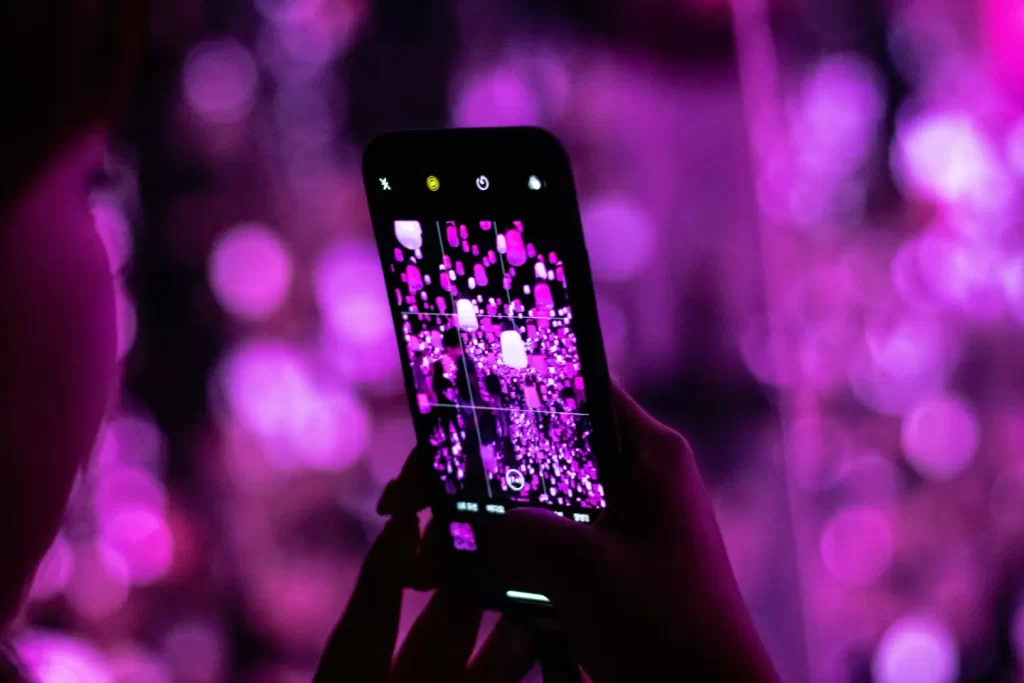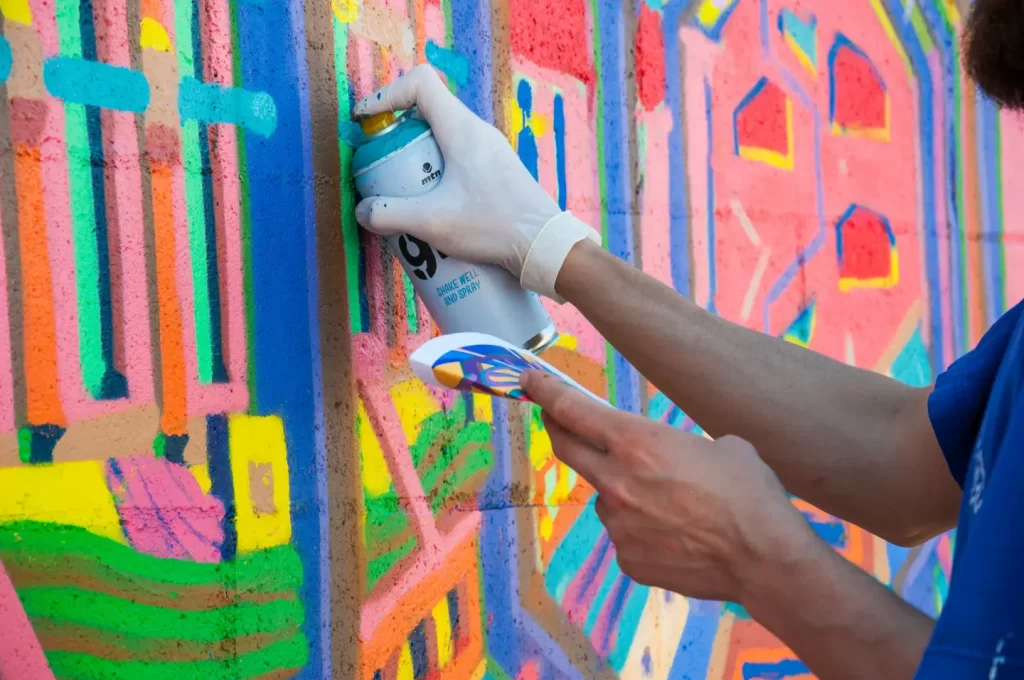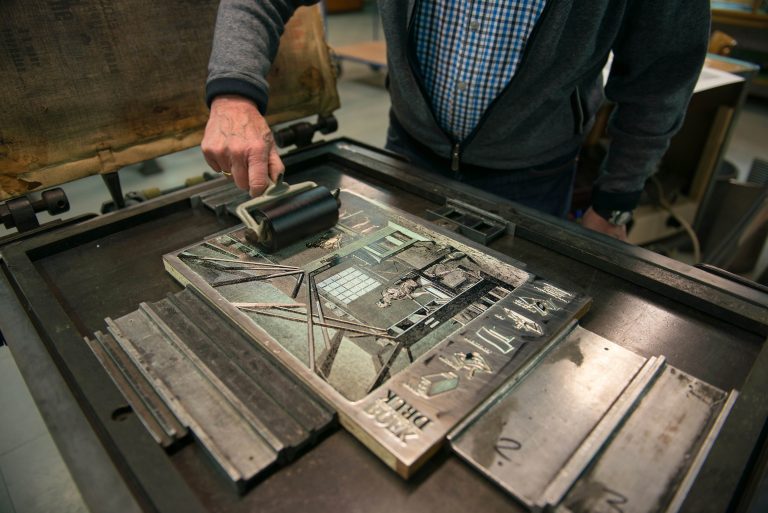The Evolution of Street Art: A Journey from Graffiti to Gallery
Street art once considered a rebellious act of vandalism, has evolved into a respected form of artistic expression. It is celebrated in galleries and museums worldwide today, highlighting its metamorphosis from the streets to the mainstream art scene.
The Birth of Street Art: A Voice for the Voiceless
In its earliest forms, street art was born out of the need for self-expression. In the 1960s and 70s, artists began using public spaces as their canvas, creating work that reflected societal issues and the political climate of the time. Rooted in graffiti, street art was often seen as an act of rebellion, a voice for the marginalized and disenfranchised.
Street Art vs. Graffiti: Understanding the Difference
While street art and graffiti are often interchangeable, they differ fundamentally. Graffiti is typically word-based and uses a coded language a specific subculture understands. In contrast, street art is more image-based and aims to be understood by a wider audience. The line between the two has blurred over time, with street art evolving to include elements of graffiti and vice versa.
The Evolution of Street Art: From Vandalism to Valued Art Form
Over the years, the perception of street art has dramatically shifted. This change can be attributed to several factors, including the adoption of street art techniques by renowned artists like Banksy and Shepard Fairey, whose works have sold for millions at auction houses. These artists’ success has helped legitimize street art, transforming it from an act of defiance into a respected art form.
The Impact of Street Art on Contemporary Art and Culture
Street art has undeniably influenced contemporary art. Its unique blend of creativity, social commentary, and public engagement has caught the attention of both the art world and the general public. Moreover, street art has become a medium for cultural expression and activism, shedding light on local and global issues.
Street Art in the Digital Age: The Intersection of Art and Technology
With the advent of digital technology, street art has found new avenues for expression. Artists are now incorporating augmented reality, projection mapping, and other digital techniques into their work, pushing the boundaries of street art. This fusion of art and technology not only enhances the visual impact of street art but also broadens its reach.
Street Art Around the World: A Global Phenomenon
Street art has increased globally, with each region adding its unique flavor to this vibrant art form. Cities like Berlin, Melbourne, and São Paulo have become renowned for their street art scenes, attracting artists and tourists alike. This global spread of street art has facilitated cross-cultural exchange and dialogue, further enriching the medium.
Street Art in the Commercial Sphere: Brands Embrace Urban Art
The commercial world has also recognized the power of street art. Brands increasingly collaborate with street artists, commissioning murals and incorporating street art aesthetics into their advertising campaigns. This commercial recognition has given street art new credibility and visibility. Still, it has also raised questions about the commercialization and co-optation of a once-rebellious art form.
The Challenges Facing Street Art: Preservation and Legal Issues
Despite its growing acceptance, street art faces several challenges. Its temporary nature and the legal grey area it often operates in pose difficulties for preservation. Additionally, copyright and ownership issues can be complex when dealing with art in public spaces. These challenges highlight the need for ongoing dialogue and policy development around street art.
Conclusion: Celebrating the Evolution of Street Art
The journey of street art from graffiti to gallery underscores the transformative power of art. It is a testament to the resilience and creativity of artists who continue to push boundaries, challenge norms, and engage with their communities in meaningful ways. As we move forward, let’s celebrate the evolution of street art and anticipate the exciting directions it will take in the future.
In embracing the complexities and contradictions inherent in its evolution, we can appreciate street art for what it truly is – a dynamic, engaging, and powerful form of artistic expression that speaks to the spirit of our times.
As street art continues to evolve, it will undoubtedly continue to influence and be influenced by societal changes. With its roots in rebellion and its future in the mainstream art scene, street art embodies a dynamic tension that fuels its evolution. As the line between street art and fine art becomes increasingly blurred, one thing is certain: street art will continue to challenge, provoke, and inspire.
In conclusion, the journey of street art from graffiti to gallery serves as a testament to the power of artistic expression. It reminds us that art can emerge from unexpected places, challenging norms and transforming our perception of what constitutes art.
Join us in celebrating the indomitable spirit of the performing arts community with our blog, “The Resilience of Performing Arts Amidst the Pandemic“.










